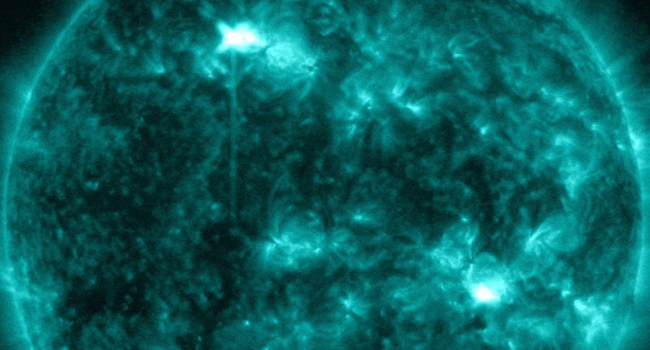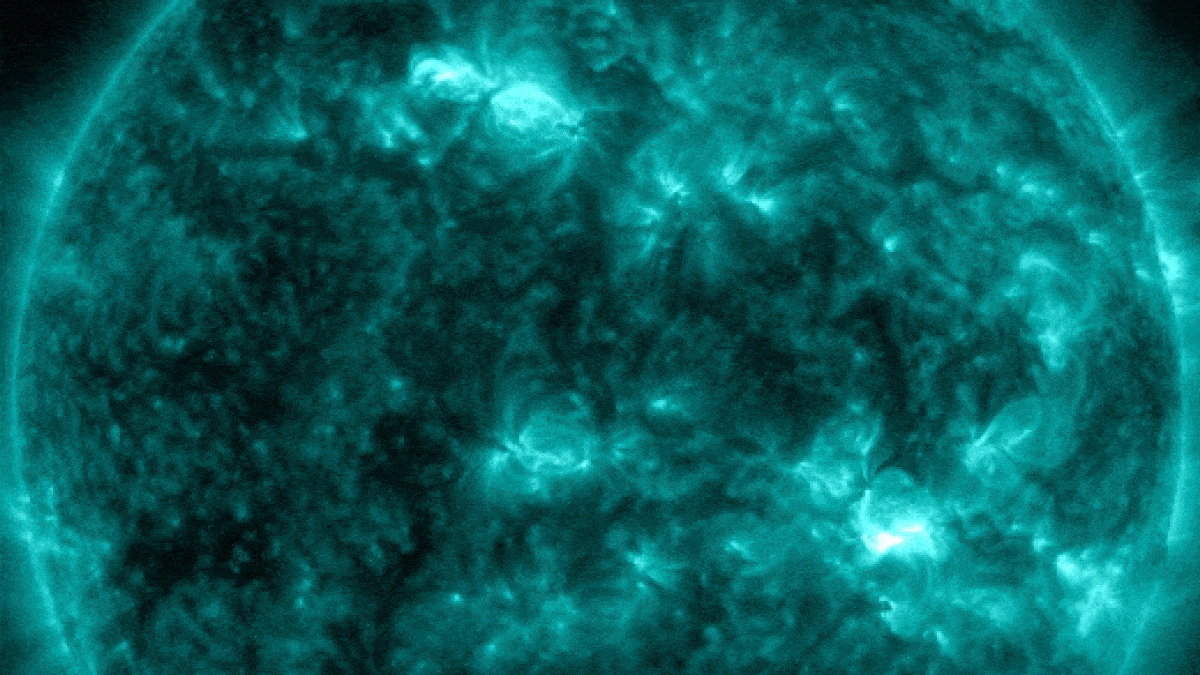
Two almost simultaneous solar flares explode from opposite sides of the sun
Two powerful solar flares recently erupted almost simultaneously from separate sunspots located on opposite hemispheres of our star. This rare occurrence, referred to as a sympathetic solar flare, serves as a reminder that we are rapidly approaching the explosive peak in the sun's 11-year cycle, known as the solar maximum, Space.com reports.
On January 22, around 19:30 Yerevan time (10:30 p.m. ET), the dual solar flares erupted almost simultaneously from sunspots AR3559 and AR3561. At that time, these sunspots were approximately 310,000 miles (500,000 kilometers) apart, a distance greater than the average separation between the moon and Earth, as reported by Spaceweather.com.
The combined power of the flares equaled a magnitude of M5.1, the second most potent class of flare the sun can produce. These erupting flares emitted a wave of high-energy particles toward Earth, causing a 30-minute radio blackout above Indonesia and parts of Australia upon impacting our planet's magnetic field, according to Spaceweather.com.

Although solar flares can sometimes release coronal mass ejections (CMEs) that trigger geomagnetic storms and auroras, neither flare in this instance seems to have resulted in a CME.
While solar flares occasionally occur rapidly from the same sunspot, a sympathetic solar flare is a distinct phenomenon. Previous assumptions considered it a rare coincidence, but a 2002 study revealed that the flare pairs are linked by massive, invisible magnetic field loops connecting their sunspots around the sun. Consequently, the flares can be viewed as two components of a single explosion.
According to the study, the twin components of a sympathetic flare can be separated by up to 30 minutes. Although the exact time gap between the recent pair's eruptions remains unclear, NASA's Solar Dynamics Observatory footage suggests they were likely separated by only a few minutes, if not seconds.
Sympathetic flares, though extremely rare, can become more frequent during solar maximum, when the sun's magnetic field becomes increasingly entangled with itself, as indicated by a 2022 study analyzing 40 years of solar flare data.
Over the last 12 months, solar activity has experienced a notable increase, marked by a rise in the number and size of sunspots, as well as more frequent and powerful solar flares.
- Related News
- Wheel of Death: new method will help astronauts stay fit in low gravity
- Due to anomalies of Orion spacecraft, lunar exploration program may be delayed for years։ NASA
- TAO Observatory: World's highest telescope to study evolution of galaxies and exoplanets
- Powerful M9.5 solar flare causes radio blackout in Pacific Ocean
- What will happen to the Earth if the Moon disappears?
- Key to conquering the Red Planet: Why is NASA studying solar storms on Mars?
- Most read
month
week
day
- Digital Julfa Network is launching a pan-Armenian centre in the metaverse, on the Fastexverse virtual platform 913
- Xiaomi unveils exclusive Redmi Note 13 Pro+ dedicated to Messi and Argentina national team 800
- Sparkles: Boston Dynamics unveils a furry robot dog that can dance (video) 795
- Is there a ninth planet in the solar system? Scientists find new evidence 672
- Smartphone catches fire in child's hand in Russia 657
- What will happen to the Earth if the Moon disappears? 648
- How to understand how protected a smartphone is from water and dust? 638
- World's largest 3D printer was created in USL It prints 29 meter-long structures 622
- iPhone 16 may get colored matte glass back panel, 7 colors 613
- New iPad Pro to receive M4 chip and to be more powerful than Apple computers 611
- Archive
